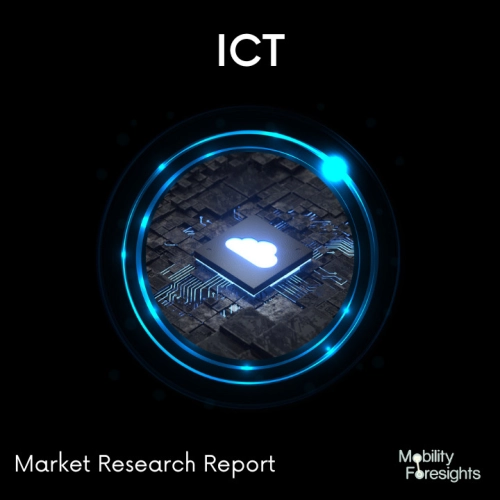
- Get in Touch with Us

Last Updated: Apr 25, 2025 | Study Period: 2024-2030
In Japan, data centers are essential to the nation's cutting-edge technical infrastructure, economic expansion, and societal well-being. The foundation of Japan's digital landscape, these facilities have a big impact on many facets of the economy and society.
Data centers in Japan are crucial for the highly developed IT and technology sectors of the country. For a variety of services, such as cloud computing, e-commerce, and internet-based applications, they offer the essential infrastructure. These facilities are used to manage and store data by Japan's cutting-edge and internationally renowned tech businesses, like Sony, Toyota, and SoftBank, allowing them to provide cutting-edge goods and services to both domestic and foreign markets.
Additionally, the importance of these data centers for scientific research and development helps to explain why Japan is a global leader in industries like robotics, automotive production, and healthcare. In order to further research efforts in a variety of fields, including artificial intelligence,genomics, and material science, high-performance computing and data storage capabilities are essential.
In a nation that is prone to natural catastrophes, data centers are essential for disaster management and recovery. In order to ensure that crucial services and communication networks can be promptly restored in the case of earthquakes, tsunamis, or other calamities, they store crucial data relating to emergency response and disaster recovery plans. Data centers additionally assist Japan's financial industry by supporting safe and effective banking and trading operations. The stability and competitiveness of Japan's financial industry are aided by these centers, which store and handle enormous volumes of financial data.
Japan has also demonstrated a rising commitment to environmental sustainability. To support the nation's efforts to minimize greenhouse gas emissions, several data centers are using energy-efficient technologies and renewable energy sources. Japan's data centers are essential to the country's technical advancement, economic growth, disaster resilience, and environmental preservation. They support Japan's status as a leader in technology and add to the general wealth and well-being of its people.

The Japan Data Center Market accounted for $XX Billion in 2022 and is anticipated to reach $XX Billion by 2030, registering a CAGR of XX% from 2024 to 2030.
In Tokyo, Japan, Equinix has opened a brand-new hyperscale data center. The opening of TY13x was announced this week by the firm. TY13x, which is situated in the Inzai region and close to TY12x, offers 8MW in its initial phase and a total of 36MW when it is fully built out. First, Equinix collaborated with Singapore's GIC sovereign wealth fund to create xScale-branded hyperscale facilities. Three Japanese xScale facilities will be built, with the locations being Tokyo and Osaka. For xScale innovations, the company has also cooperated with PGIM.
Twelve xScale data centers have now been launched by Equinix throughout the world, including TY12x and TY13x in Tokyo, OS2x in Osaka, Japan, and many other locations. There are nine xScale builds being developed for the company's hyperscale portfolio at the moment. The business wants to create 36xScale.
| Sl no | Topic |
| 1 | Market Segmentation |
| 2 | Scope of the report |
| 3 | Abbreviations |
| 4 | Research Methodology |
| 5 | Executive Summary |
| 6 | Introduction |
| 7 | Insights from Industry stakeholders |
| 8 | Cost breakdown of Product by sub-components and average profit margin |
| 9 | Disruptive innovation in the Industry |
| 10 | Technology trends in the Industry |
| 11 | Consumer trends in the industry |
| 12 | Recent Production Milestones |
| 13 | Component Manufacturing in US, EU and China |
| 14 | COVID-19 impact on overall market |
| 15 | COVID-19 impact on Production of components |
| 16 | COVID-19 impact on Point of sale |
| 17 | Market Segmentation, Dynamics and Forecast by Geography, 2024-2030 |
| 18 | Market Segmentation, Dynamics and Forecast by Product Type, 2024-2030 |
| 19 | Market Segmentation, Dynamics and Forecast by Application, 2024-2030 |
| 20 | Market Segmentation, Dynamics and Forecast by End use, 2024-2030 |
| 21 | Product installation rate by OEM, 2023 |
| 22 | Incline/Decline in Average B-2-B selling price in past 5 years |
| 23 | Competition from substitute products |
| 24 | Gross margin and average profitability of suppliers |
| 25 | New product development in past 12 months |
| 26 | M&A in past 12 months |
| 27 | Growth strategy of leading players |
| 28 | Market share of vendors, 2023 |
| 29 | Company Profiles |
| 30 | Unmet needs and opportunity for new suppliers |
| 31 | Conclusion |
| 32 | Appendix |